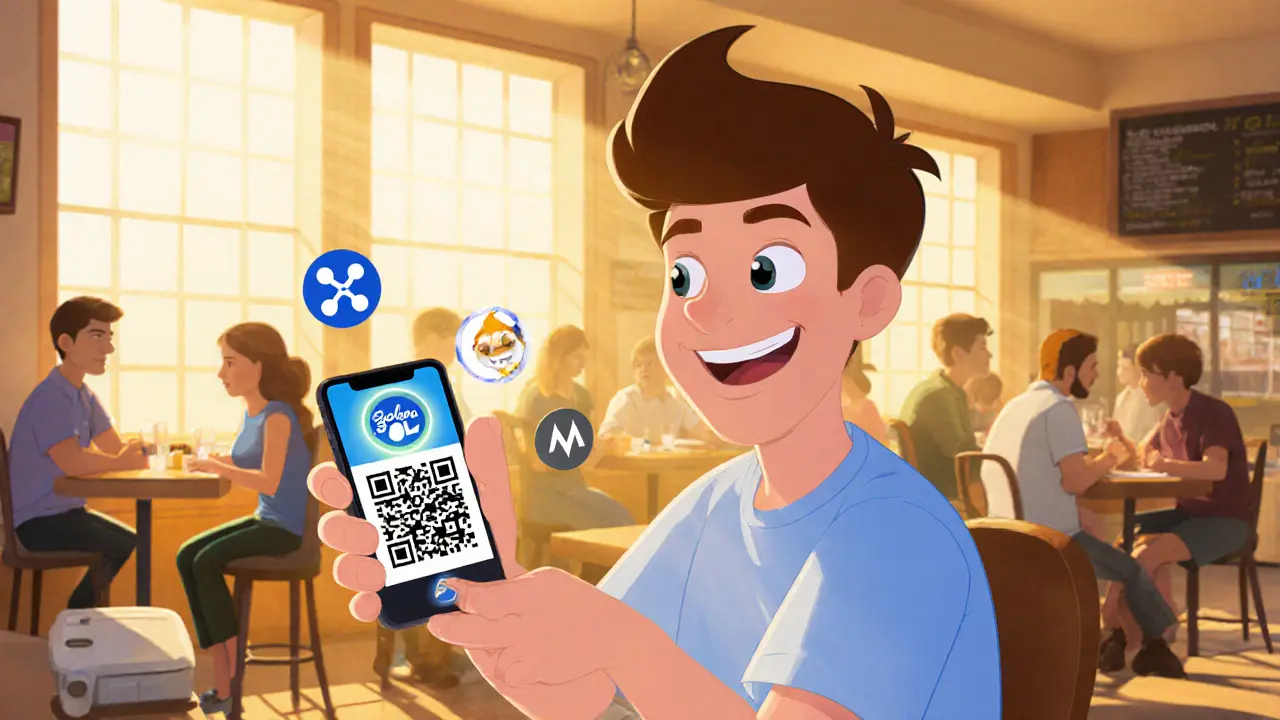Explore the top cryptocurrencies for daily purchases, comparing Solana, XRP, and Monero on speed, fees, privacy, and merchant adoption.
Solana – Fast Blockchain, NFTs, DeFi & Tokenomics Explained
When working with Solana, a high‑performance blockchain that blends Proof of History with Proof of Stake to process thousands of transactions per second. Also known as SOL, it powers a thriving NFT ecosystem where creators mint art for a few cents, and a robust DeFi landscape that offers lending, swapping and yield farms without the congestion seen on older chains. Understanding the tokenomics of SPL tokens is key to judging a project's long‑term viability, while frequent airdrop campaigns keep the community engaged and reward early adopters. In short, Solana encompasses fast transaction processing, low fees, and a developer‑friendly environment that fuels these sub‑ecosystems.
Why Solana’s Speed Matters for NFTs, DeFi and Airdrops
The speed advantage creates a direct link between the central chain and its sub‑applications. NFT creators benefit because minting and trading happen instantly, which lowers price volatility and improves buyer confidence. DeFi protocols rely on that same throughput to settle swaps and liquidations in real time, preventing the cascade effects that cause flash crashes elsewhere. Tokenomics of SPL assets is shaped by these fast cycles: token supply, staking rewards and fee structures can be adjusted more responsively, giving projects a better chance to stay competitive. Finally, airdrop mechanisms exploit the cheap transaction costs to distribute tokens to thousands of wallets in a single block, turning community growth into a measurable metric. Those relationships—Solana enables NFTs, NFTs boost creator income; Solana powers DeFi, DeFi needs fast settlement; tokenomics depends on rapid feedback loops; airdrops leverage low fees—form the backbone of the ecosystem.
For anyone scouting Solana projects, start by checking the transaction speed, fee schedule, and how the protocol integrates with the broader ecosystem. Look for clear tokenomics outlines, especially the distribution model for SPL tokens, and see whether the project participates in community airdrops or NFT drops—those signals often indicate active development and user interest. The articles below dive deep into real‑world examples: security risks on centralized exchanges that affect SOL holders, step‑by‑step NFT launch guides, airdrop claim tutorials, and analyses of tokenomics for emerging coins. Armed with this context, you’ll be ready to evaluate each piece of content and decide which Solana opportunities match your goals.





